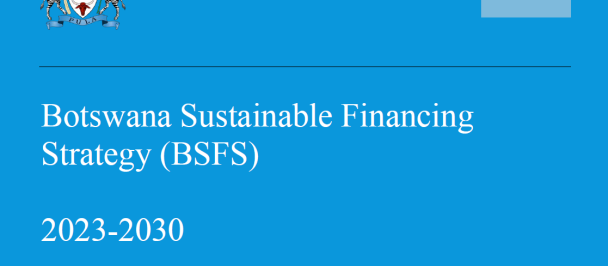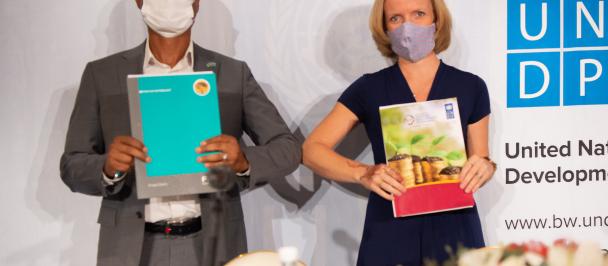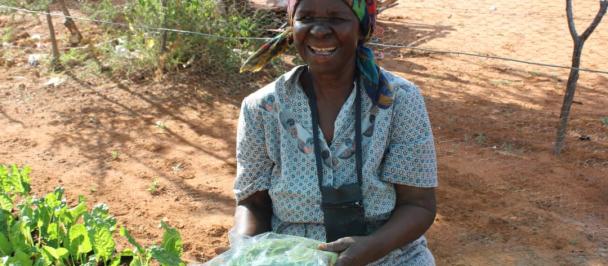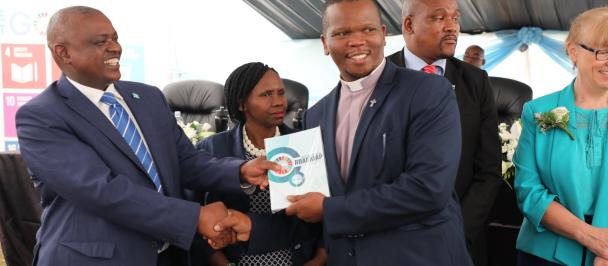Planning Officers & other stakeholders during the SDG Planning Guidelines in Gaborone, Botswana
The realization of the 2030 Agenda and its Sustainable Development Goals (SDGs) calls for deliberate action and a fulfillment of the pledge of “leaving no one behind” by all stakeholders. This is in view of the fact that the agenda recognizes sector-based specializations across the three of dimensions of development being, social, economic and environmental.
The Government of Botswana, through Ministry of Finance and Economic Development (MFED), is leading SDG implementation and acceleration efforts by bringing together all state and non-state actors at all levels. As part of the domestication process, efforts have been employed to align the SDGs with national development frameworks, namely Vision 2036, National Development Plan (NDP 11) as well as District and Urban Development Plans. Other notable initiatives include development of the Domesticated Indicated Framework (DIF), formation of the necessary institutional structure as well as development of the National Roadmap on SDGs, a strategic document that guides implementation efforts at both national and sub-national levels. The Roadmap identifies six broad/strategic areas to accelerate implementation of the SDGs, being;
· National Ownership, Leadership and Coordination
· Advocacy, Sensitization and Awareness
· Planning and Implementation
· Data, Monitoring, Reporting and Evaluation
· Strengthening the SDGs Institutional Arrangements
· Policy Research and Interventions
Ministry of Finance and Economic Development (MFED), being the SDG Secretariat, ensures that strategic interventions that contribute towards Botswana’s SDG realization and linked to the above mentioned broad areas are in place. One such is the development of the SDG Planning Guidelines to support Planning Officers in line Ministries, Departments and Agencies (MDAs), and other stakeholders to integrate SDGs into planning instruments and thus ensuring their systematic implementation. The initiative, executed in collaboration with United Nations (UN) Botswana, specifically United Nations Development Programme (UNDP), is in line with the Roadmap’s broad/strategic area of Planning and Implementation, which calls for the alignment of the national and local levels development plans with the SDGs and their targets and indicators, among others. Other partners include National Strategy Office (NSO) and Statistics Botswana (SB).
The guidelines have been designed to use a structured approach as opposed to an alignment one, in facilitating the integration of SDGs into planning frameworks. In this regard, the process entails five stages and a series of steps to be followed as outlined below;
i) STAGE 1: This involves defining the Goals, targets and indicators which are considered relevant to Botswana as outlined in the Domesticated Indicator Framework.
ii) STAGE 2: Prioritizing the targets and indicators to be implemented.
iii) STAGE 3: Collecting baseline indicator data to determine status of progress to date or the starting point as well as the annual targets.
iv) STAGE 4: Setting up of annual targets using baseline data.
v) STAGE 5: Integrating the relevant targets into national/sector policies, strategies and plans and defining programmes and/or actions required to be implemented to support achievement of targets.
The rollout of the Planning Guidelines has commenced with three Ministries to date, being Ministry of Finance and Economic Development, Ministry of Agricultural Development and Food Security as well as Ministry of Environment, Natural Resources Conservation and Tourism. The initiative is part of Botswana’s SDGs acceleration actions during the Decade of Action. So far the exercise is proving vital in solidifying understanding and ownership of SDGs by development actors at sectoral level. It is also helping in unearthing administrative data that lies within MDAs which is crucial to closing national data gaps.
Botswana is faced with various socio-economic challenges such as high levels of inequality, incidences of poverty, unemployment and a slower economic growth with eroded fiscal buffers. Like many countries, the country’s economy faces an unprecedented challenge due to COVID-19 pandemic. The SDGs, being transformative in nature, are critical in ensuring that Botswana tackles her development challenges as well as recover from the pandemic. The rollout of the SDG Planning Guidelines in Botswana will go a long way in ensuring that the country tackles its socio-economic challenges and lay out a more sustainable future in the spirit of leaving no one behind.

 Locations
Locations


